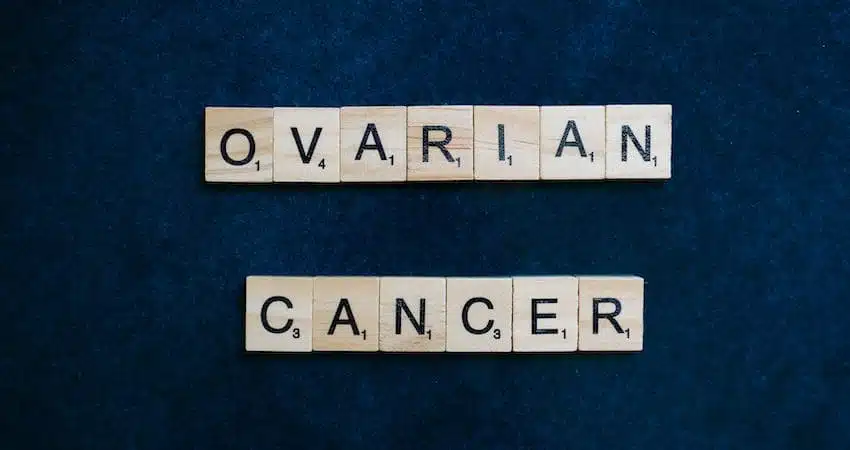Known as a “silent killer” ovarian cancer perplexes even cancer experts by presenting with vague, commonplace symptoms easily confused with less serious issues. As a result, over 75% of ovarian cancer cases reach advanced stages by the time they are correctly identified, drastically reducing survivability odds. Early detection simply defies current medical technologies. Yet learning to decode subtle clues something is amiss empowers all women to access life-saving care promptly when every moment matters most. This guide illuminates key facets of ovarian cancer’s risks, impacts and innovations in holistic treatment supporting survivors.
What Exactly is Ovarian Cancer?
Ovarian cancer refers to any cancer originating in a woman’s ovaries or fallopian tubes. The ovaries are two small, almond-shaped organs on each side of the uterus storing eggs and producing estrogen and progesterone hormones. Fallopian tubes carry eggs from ovaries to the uterus.
When genes regulating ovarian or fallopian tube cell growth mutate and malfunction, rapid division creates masses called tumors. Tumors may be benign (non-cancerous) or malignant (cancerous, able to invade other body parts). It specifically indicates malignant cell overgrowths.
Who Gets Ovarian Cancer?
Any woman can develop ovarian cancer, but Around 20,000 women get diagnosed yearly. It accounts for about 3% of all female cancer cases. The risk rises with age – over half of cases occur in women 63 or older.
The lifetime odds sit around 1 in 78 overall. But many factors modify individual risk profiles significantly. Family history, reproductive patterns, medical conditions, and inherited genetic mutations all impact susceptibility. Talk to your doctor about personalized risk assessment.
Recognizing Ovarian Cancer Symptoms
Early ovarian cancer rarely causes noticeable symptoms, earning the nickname “silent killer.” Advanced stage tumors trigger more obvious signs as cancer spreads inside the pelvis and abdomen:
- Bloating
- Pelvic or abdominal swelling/fullness
- Urinary urgency or frequency
- Difficulty eating/feeling full faster
- Upset stomach/heartburn/indigestion
- Menstrual changes
- Back, leg, or abdominal pain
- Fatigue
- Constipation
If these symptoms arise persistently, see your gynecologist or primary care physician promptly for evaluation. Catching it early boosts treatment success odds immensely.
What Causes Ovarian Cancer Cell Mutations?
Researchers don’t know exactly why some women’s ovarian cells start rapidly dividing abnormally. But certain factors raise risk:
- Age: Risk increases with age, especially over 50.
- Family History: Having close relatives diagnosed elevates susceptibility.
- BRCA Gene Mutations: Women carrying BRCA1/2 gene mutations have up to a 70% lifetime ovarian cancer risk.
- Lynch Syndrome: This inherited disorder also heightens ovarian cancer odds.
- Childbearing Patterns: Never giving birth or infertility heightens susceptibility.
- Endometriosis: This disorder may increase risk slightly.
- Estrogen Therapy: Long-term estrogen use after menopause may contribute for some women.
Talk to your doctor about genetic testing or risk-reducing surgery if these risk factors apply to you.
How Does Ovarian Cancer Spread?
Ovarian cancer cells can peel off tumors and travel through blood vessels or body cavities to invade distant sites. Typically first spreads inside the pelvis near uterus and bladder. Later often reaches the liver, lungs, lymph nodes, or lining around the bowel and stomach.
Recognizing and halting metastasis (spread) early is critical for survival. Treatments often target both original tumor and migrating cells around the body. Catching it before much spreading allows more options.
Diagnosing Ovarian Cancer Effectively
Lack of early screening tests and vague initial symptoms commonly delay ovarian cancer diagnosis. But various approaches help distinguish harmless versus dangerous pelvic masses:
- Physical Exam: Doctors check for abnormal fluid buildup and organ enlargement pointing to tumors.
- Imaging: CT scans, ultrasounds, MRIs, and PET scans reveal ovarian mass locations, sizes, and spreading.
- Blood Tests: High CA-125 levels may reflect tumors but can also rise from other conditions.
- Surgery: Removal and biopsy of suspicious tissues is the definitive diagnostic method.
Once confirmed, doctors assign FIGO stage categories estimating severity. Stages range from I (confined to ovaries) to IV (distant metastases). Personalized treatment plans depend partly on staging conclusions.
Ovarian Cancer Treatment Options
Standard interventions target existing tumors and cancerous spots around the body:
- Surgery: Removing detectable tumors and affected nearby organs often happens first. Minimally invasive laparoscopy or open abdominal procedures both performed.
- Chemotherapy: Powerful IV/oral drugs aimed at killing rapidly multiplying cells often follows surgery. Combinations and cycles customize intensity.
- Targeted Therapy: Newer medications identify and attack specific cancer cell vulnerabilities. Paring with chemo minimizes resistance.
- Radiation Therapy: High energy beams destroying cancerous areas may assist other modalities occasionally when masses localized.
- Hormone Therapy: Ovarian cancers sometimes use estrogen to grow; blocking hormones via medications can then slow cancer cell proliferation.
Clinical trials testing experimental meds augment traditional options too. Optimal combinations and sequencing vary individually. Discuss multimodal plans with your oncologist targeting lifespan and quality of life.
Reducing Ovarian Cancer Risks Proactively
No definitive prevention strategies exist protecting all women. But proactive steps minimize susceptibility:
- Oral contraceptive use lowers risk significantly.
- Breastfeeding after pregnancy also thought protective for some.
- Genetic testing identifies inherited mutations (BRCA1/2, Lynch syndrome) prompting preventative ovary removal surgery before cancer develops.
- Preventing obesity and regulating periods earlier in life via exercise, sleep, and nutrition may help lower odds.
Discuss screening starting ages and genetic testing referral with your OB-GYN or primary doctor based on personal and family ovarian cancer history.
What is the Ovarian Cancer Survival Rate?
Ovarian cancer prognosis varies significantly by stage at diagnosis:
- Stage 1: ~92% of patients survive 5+ years
- Stage 2: ~70% survive 5+ years
- Stage 3: ~39% survive 5 years
- Stage 4: ~17% survive 5 years
While daunting if diagnosed at later stages when cured rates dip below 50%, tens of thousands of women beat ovarian cancer, even with metastases. Continuing research and medical innovations ensure outlooks keep improving.
Living With Ovarian Cancer
Processing an ovarian cancer diagnosis elicits potent emotions – grief, anger, sadness, fear. Connecting with fellow survivors aids coping and discovering hope. Consider:
- Attending in-person or online support groups
- Reading survivor stories normalize the rollercoaster ride ahead
- Journaling/blogging about the journey provides outlet expressing thoughts
- Joining advocacy groups like BrightPink rallies spirits changing outcomes for other women
While staying positive aids healing and resilience through difficult treatments, embracing all feelings arising when facing mortality represents essential processing for many. Let trusted confidants provide ears for unloading the spectrum of emotions ahead.
Arm yourself with questions before oncologist visits too – uncertainty exacerbates distress. Common concerns include treatment intricacies, clinical trial opportunities, hereditary risk questions, financial support resources and more.
Summing Up the Ovarian Cancer Battle Plan
While approximately 300,000 women actively fighting worldwide makes ovarian cancer incidence extremely rare, its vagueness prodromal and propensity metastasizing covertly increase mortality without proper awareness and intervention.
Fortunately, prioritizing risk factors, recognizing subtle symptom patterns, promptly consulting doctors for imaging tests, willinging undergoing biopsy procedures, and courageously facing treatments means thousands defeat the shifty menace annually.
Commit to annual check-ups, listen to your body between visits, and discuss all concerning changes with doctors immediately. Early detection saves lives – give yourself the best opportunity overcoming ovarian cancer before it ovrecomes you through prompt action.



